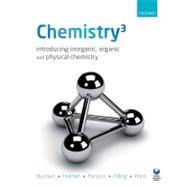
| Fundamentals | |
| Atomic structure and properties | |
| Diatomic molecules | |
| Structure and shape of polyatomic molecules | |
| Solids | |
| Acids and bases | |
| Gases | |
| Reaction kinetics | |
| The language of organic chemistry | |
| Isomerism and stereochemistry | |
| Molecular spectroscopy | |
| Analytical chemistry | |
| Molecular characterization | |
| Energy and thermochemistry | |
| Entropy and Gibbs energy | |
| Chemical equilibrium | |
| Electrochemistry | |
| Phase equilibrium & solutions | |
| Organic reaction mechanisms | |
| Halogenoalkanes: substitution and elimination reactions | |
| Alkenes and alkynes: electrophilic addition and pericyclic reactions | |
| Benzene and other aromatic compunds: electrophilic substitution reactions | |
| Aldehydes and ketones: nucleophilic addition and alpha-substitution reactions | |
| Carboxylic acids and derivatives: nucleophilic acyl substitution and alpha-substitution reactions | |
| Hydrogen | |
| s-block chemistry | |
| p-block chemistry | |
| d-block chemistry | |
| Maths Toolkit | |
| Appendix | |
| Table of Contents provided by Publisher. All Rights Reserved. |
The New copy of this book will include any supplemental materials advertised. Please check the title of the book to determine if it should include any access cards, study guides, lab manuals, CDs, etc.
The Used, Rental and eBook copies of this book are not guaranteed to include any supplemental materials. Typically, only the book itself is included. This is true even if the title states it includes any access cards, study guides, lab manuals, CDs, etc.